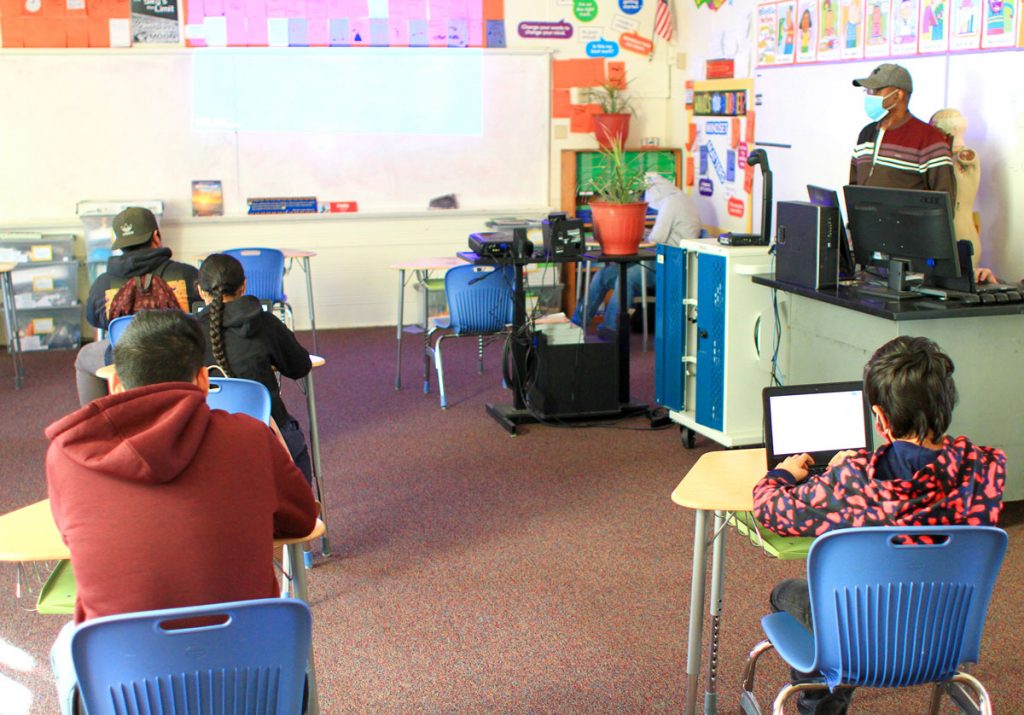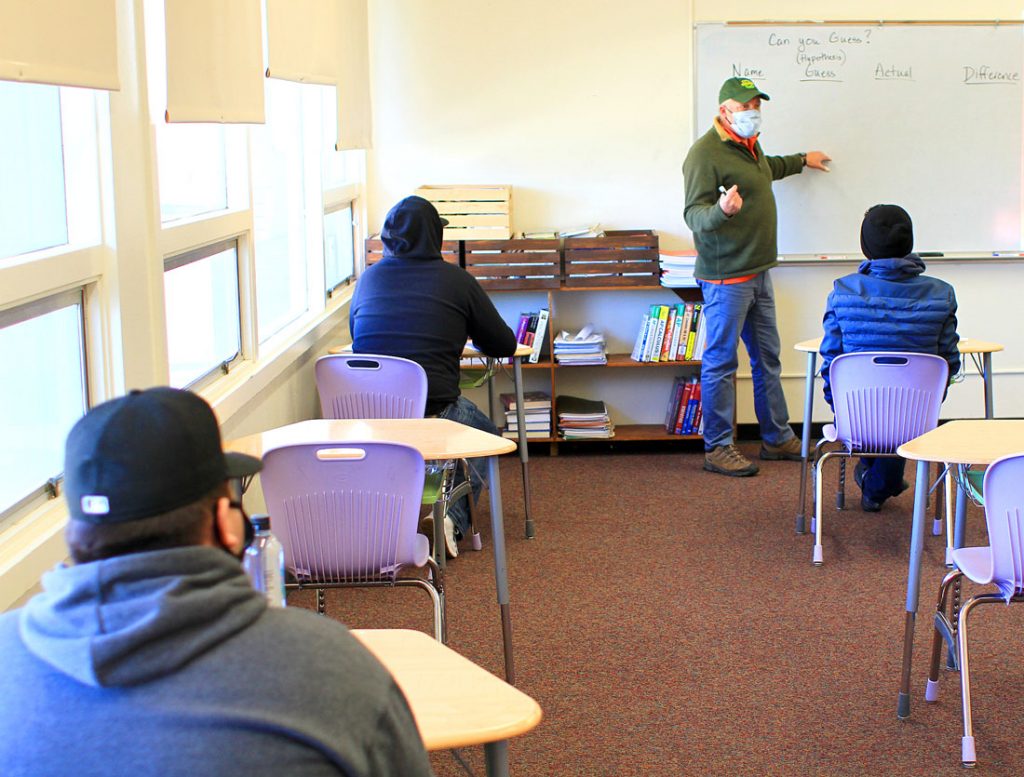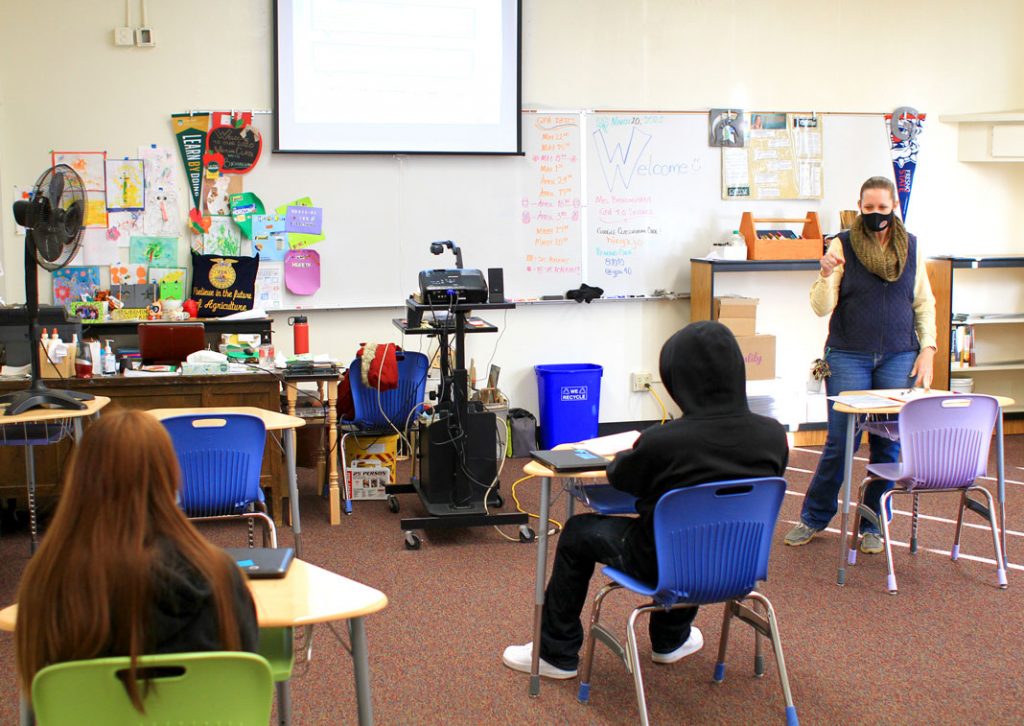
GONZALES — As schools in California begin to finalize plans for reopening, grade recovery ideas have become an essential part of the process to ensure large numbers of future graduates don’t fail.
Gonzales Superintendent Yvette Irving said the district has brought its high school non-graduate rate down to 40% to 45% and is looking to decrease that percentage as Gonzales High School moves toward an April 12 reopening.
A presentation by Irving to the Gonzales Unified School District on March 9 showed a reopening timeline with a staggered schedule. TK through second grade would return on April 12, followed by grades three through five on April 15. Eighth graders and high school students would then return on April 19.
To bring grades back up across all grade levels, the district has enacted multiple strategies. A daily hub program operates on weekdays, during which students come in for small cohort in-person instruction. There is also a GPA 4.0 Saturday program, with students arriving for small group instruction on Saturdays, in addition to an online credit recovery option through Apex.
The Saturday program is also called the Gonzales Preparatory Academy, as Irving explained its intent is to accelerate student growth at all grade levels rather than be seen as a punitive Saturday school.
“We’ve got approximately 140 to 160 students coming on Saturday mornings,” Irving said.
About 80 high school students participate in the Saturday program.
“The closer we get to June, the more kids are stepping forward,” Irving said. “Parents are also gaining more confidence as the health metrics decline.”

The Saturday program started last fall, went through a shutdown from December through February, and is back up and running at the city’s three campuses. A teacher oversees every classroom, where many of the students work to make up missing credits.
The hub program also offers a place where students can come for extra help, especially if they don’t have good internet access at home or don’t have the discipline at home for distance learning.
“We have hired additional staff specifically for the hubs,” Irving said. “We’re very fortunate on Saturdays, we have staff coming from other districts and the county office to help support us with in-person instruction.”
In addition, Irving said the district is planning an extended school year with a six-week summer school for those students who need either. The extended year would allow for what are called super seniors, those who recover their grades after the traditional end of year in early June, thus missing the usual graduation date despite making up the credit to eventually graduate.
Drive-thru graduations will most likely take place again this year, as the county has not issued expectations to be in a lower restriction tier that would allow for in-person graduation ceremonies.
Not only is lack of completed coursework causing grade trouble for students, Irving said attendance has turned out to be a large problem.
“Kids are disengaged and fatigued with online,” Irving said. Because of that, their attendance suffers, which in turn hurts their academic performance.

Meanwhile, teachers are currently working with their students through distance learning, which means being required to issue grades under existing policy.
“We’re following the policies that are given to us from the superintendent,” said Fidencio Cuevas, a teacher at Gonzales High School.
However, teachers have had to place their judgment in situations where student failure isn’t the result of slacking off. Though they recognize the human plight of their students, they must issue a grade eventually.
“The situation is very complicated because I have kids who suddenly disappear,” said Ji Jun, another teacher at GHS. “I had one student who’s entire family got Covid and she was the only one left standing. … When the quarter ended, she had a lot of zeroes, but that’s not a definitive zero. She’s still making up her grades.”
Jun said he had many students who are still turning in work from the second quarter, even in March. He noted high infection rates in Gonzales as the reason why students were seriously delayed in turning in assignments.
Cuevas said teachers certainly know the cumulative effects of the grades they assign, and that they aren’t looking forward to failing students.
“If you look across the state and across the country, you’re going to find that the vast majority of teachers are doing whatever they can to meet the needs of their students,” he said. “We have elementary teachers that are taking materials and resources to each of their students’ homes. We have high school teachers that are meeting with students in the afternoon or evening.”

Cuevas noted that he and other teachers had recognized their students oftentimes have taken on more burdens and responsibilities than they already had thanks to the pandemic, including taking care of younger siblings.
“We’re seeing there’s struggles that are happening,” he said. “It’s at each district. It’s not unique to ours.”
Plans put into place have also not allowed for the best use of time.
Cuevas said in Gonzales, the distance-learning schedule gives teachers 40 minutes twice a week with their students through online lessons at the high school level. He noted that such low amounts of time increase the difficulty of preparing for tests.
According to Jun, teachers have also noticed the mental health toll the pandemic has taken on students. He mentioned assignments where students write about how hard it is to be a modern teenager, trapped in the house without the ability to see friends.
While this triggers problem behavior, the issues deepen when parents take away phones as punishment. It might make sense in normal times, but during a shelter-in-place era, the phones are the only way teens have of connecting to the outside world.
“It’s more than not being able to go to school. They can’t see their friends or go to the mall,” Jun said. “Their entire lives are impacted.”













